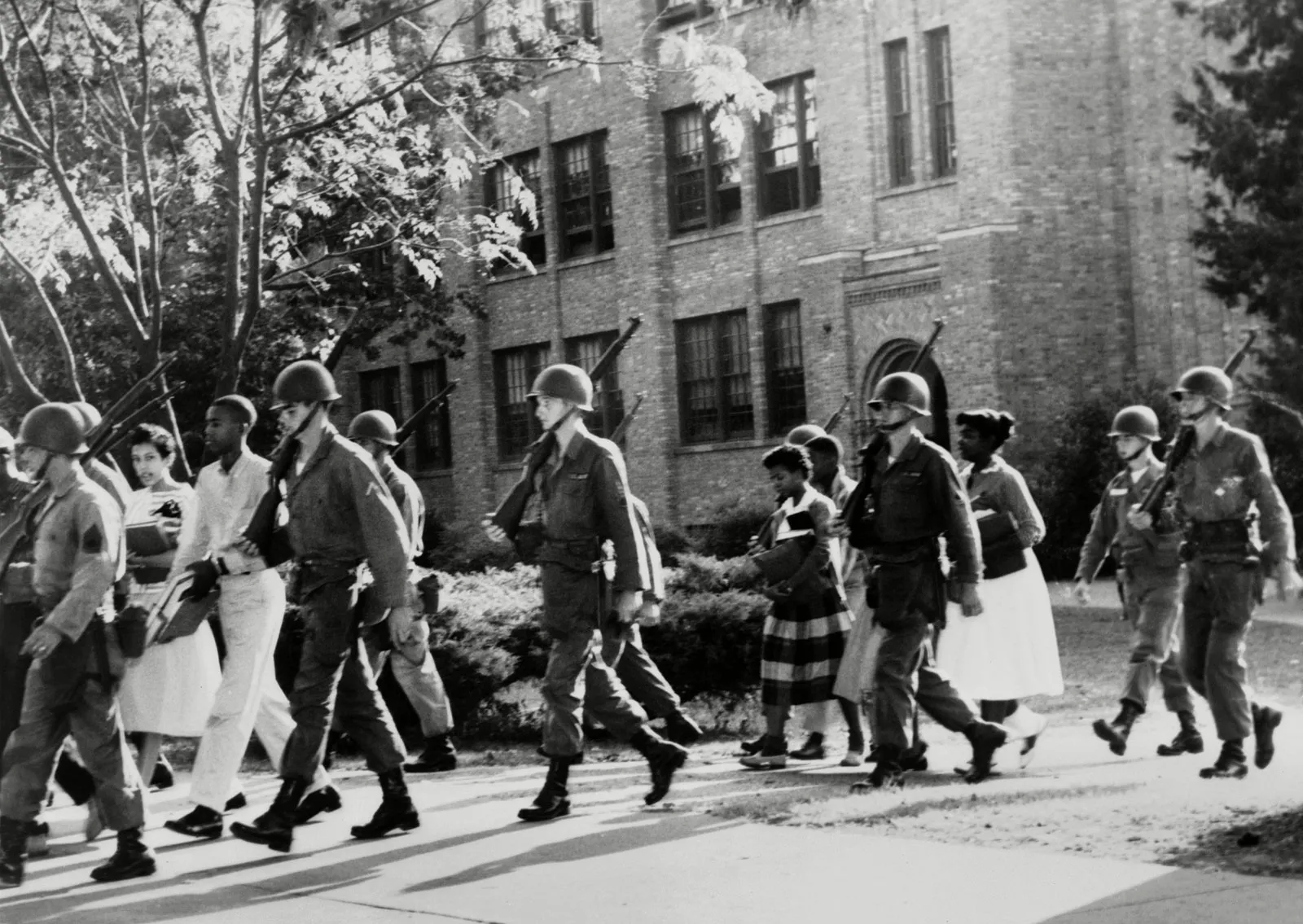Warriors Don’t Cry: Connecting History, Literature, and Our Lives
Lesson by Linda Christensen
The Little Rock Nine being escorted by the National Guard to Little Rock Central High School, Arkansas, 1957.
In her memoir, Warriors Don’t Cry, Melba Pattillo Beals walks students into the events of Central High School and makes them feel the sting of physical and emotional abuse the Little Rock Nine suffered as they lived the history of the Brown v. Board of Education decision. Beals’ book tells the story of young people who became accidental heroes when their lives intersected a movement for justice in education, and they made the choice to join the movement instead of taking an easier path.
This teaching activity encourages teachers to begin with a role play to increase students’ knowledge of the historical context of segregation and the struggle for civil rights. Following the role play, students write a “Writing for Justice” narrative about an incident from their lives. They then engage in a literary mixer as they meet key players in the book.
While students read the book, they keep a dialogue journal where they keep track of their insights and questions. They also identify targets and perpetrators of injustice as well as allies and bystanders. During the unit, students write an essay, poetry, and interior monologues. They draw literary postcards, engage in improvisations, and create character silhouettes to collect evidence for their essay. Linda Christensen also interlaces footage from Eyes on the Prize and Standing on My Sisters’ Shoulders for students to see and hear events described in the memoir. The films and other texts from the time period help students understand that the story of the Little Rock Nine was part of a larger movement to reshape U.S. society.


